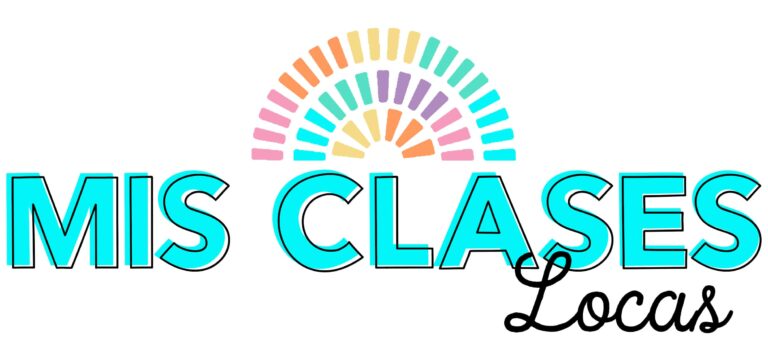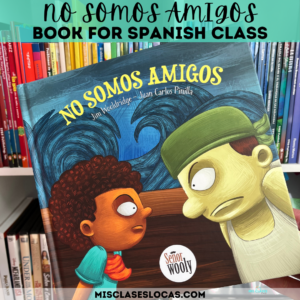Inside: Resources for teaching the novel Esperanza by Carol Gaab in Spanish class. Teaching the novel Esperanza in Spanish class.

Teaching the novel Esperanza in Spanish Class
I just finished teaching the novel Esperanza by Carol Gaab for the fourth time in two years. Last year it was the first novel my Spanish III class ever read. And then my Spanish II class read it in semester 2.
This year at a new school, Spanish III read Esperanza in trimester 1. My second class of Spanish III read it in trimester 2. I know that it is marked a “level 1 book” and is in the present tense, but I would personally shy away from reading it in Spanish 1. This is due to the deep themes and discussions that it brings up about social justice and immigration.
If you are going to teach Esperanza, I would highly recommend the Teacher’s Guide & Audio Book. Here is my first post about teaching Esperanza after year 1.
Challenges Teaching the Novel Esperanza
First, you may think that after teaching something three times, it gets easier. But, that was the opposite for me this past time. I made the mistake of teaching this novel during the 2015 Iowa caucuses. This was a time when students were bombarded from all sides on TV, social media, and people around them with political views, especially on immigration.
After a particularly difficult class discussing Chapter 1 and unions, I was called into the principal’s office. Two separate parents had come in complaining about my class. They complained about how I was “pushing my political agenda on the students.” (I exposed students to the possibility that immigration is needed in certain situations. There are many in this town of 700 people who are in the “build a wall” camp.)
I was obviously quite upset about this reaction and sent an SOS to a local Iowa CI group that I am a part of. Luckily, some pretty awesome educators came to my rescue and convinced me to keep going and not just drop the novel. They shared similar stories of parents, administrators, and students fighting the real-life content that they were trying to get across.
I decided to focus my attention on immigration from Guatemala during the civil war, so as to not bring in current politics. Also, I really pushed that one of my essential standards is “I can use my language skills to recognize others’ ways of thinking as well as my own.” As an educator, I would love for my students’ to gain empathy for a situation, but I will even settle for just gaining a new, broader way of thinking about the world.
Before starting the novel Esperanza in Spanish Class
Before starting to read, we spent two weeks introducing Guatemala, poverty, the Guatemalan Civil War, and immigration from Central America. There are a lot of deep topics in the novel and all of this front-loading really has helped the deep comprehension of the novel and the themes.
- La Geografía de Guatemala – reading activity by Martina Bex
- Living on One – A great hour-long documentary on Netflix. It is in mostly English, but it takes place in Guatemala and really made students think about the extremity of poverty that many people live in. I had some discussion questions in English for classes that needed something to do while watching to keep them focused. These could also be put in Spanish as well. *See the end of the post for a free any documentary resource*
- Ave Que Emigra – song activity by Sharon Birch
- Student Slideshow – A student from my former school went on a mission trip with the International Samaritan organization in Guatemala in the summer of 2014. This Slideshow was made by Adrianna and shows true poverty.
- Guatemala Slideshow – The slideshow from the teacher’s guide gives a nice introduction to the country, as well as the Guatemalan Civil War.
- Which Way Home – Before starting the novel, as a class, we watched this great documentary about child immigrants from Central America. Check out this post about why I would recommend using the subtitles to get the most out of the movie. I moved this to before reading since it gives the students a better visual picture of the lives people are trying to leave behind in Central America. *See the end of the post for a free any documentary resource*
- Immigration Simulation – idea from Carrie Toth
Teaching the novel Esperanza
First, I have one large Google Slides for a novel that includes chapter-by-chapter pre-reading questions, vocabulary, discussion questions, and class activities. This was shared on Schoology before we started the unit, so anytime a student is absent, they know they are expected to read the next chapter and complete all activities listed.
During class, I post the discussion questions, which helps me to focus while conversing as a class, and keep everything organized. This Slides is heavily based on the Teacher’s Guide, so I can not post it here. Here are some specific things we did while reading the novel.
- Jason was one of the teachers who came to my rescue and convinced me to not shy away from immigration, but instead have students experience it through the simulation he created. I printed colored game board and directions for each table, so we had many going on at once. One mistake I made was not specifying that immigration forms are to be filled out as Alberto from the book. This ensures that students see how he would do in an immigration interview, and how difficult the process really is.
Esperanza Chapter 9 – Immigrant Archive Project – with activity by Martina Bex
After the novel Esperanza
In my first year as our assessment, we completed the great choice board project from Elizabeth Dentlinger. For this, you would need more class time if you want quality projects. This year I gave students the option of a project or an interpersonal speaking and written presentational writing assessment. They chose the assessments instead.
Overall, I am glad I stuck with the novel and hope that students gain a new perspective on the topic of immigration.
For more inspiration for teaching Esperanza check out these posts from Martina Bex, Profe Hanson, Kristy Placido, Elizabeth Dentlinger. & my immigration Pinterest board.





